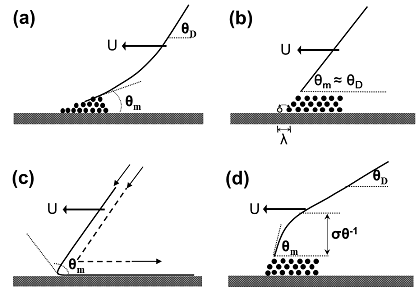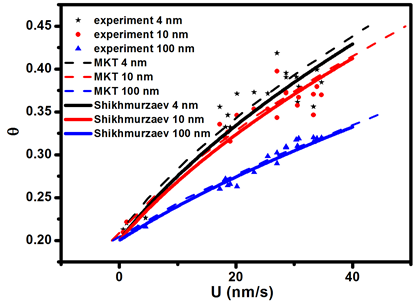Dynamic wetting is ubiquitous in natural and man-made systems . It plays important roles in large scale systems such as oil recovery, coating, pesticide deposition , water drainage and in small scale systems such as electronics cooling , microfluidics , self-assembly , and various biological processes . Despite numerous efforts in recent decades, the precise wetting mechanisms remain vague, especially for partial wetting which lacks precursor films. Various hypothes es and theories have been proposed with the debate lasting for years regarding the contact line mov ement mechanism (molecule jumping, interface rolling, etc.), the regulation of the hydrodynamic singularity (slip, disjoining pressure, diffusion, etc.), and the correct model for predicting the profile and contact angles.
We study the spreading of millimeter-sized non-volatile droplets on partial-wetting substrates. The liquid topography of the microscopic region close to the contact line is measured and the local microscopic contact angles i.e. θm are extracted at film thicknesses ranged from 1000 down to 3 nm. Local θm decreases when away from the contact line, approaching a constant value that turns out to be the apparent contact angle θD. Neither the hydrodynamic theory nor the molecular kinetic theory can explain why θm is larger than θD, but the analysis based on the molecular kinetic theory indicates it could be an efficient way for the contact line to facilitate its own advancing motion. Moreover, θm is highly dependent to the advancing velocity, i.e. increases with the velocity, which is against the assumption of constant θm that widely used in the hydrodynamic theory.
 Figure 1
Figure 1
 Figure 2
Figure 2
 Figure 3
Figure 3